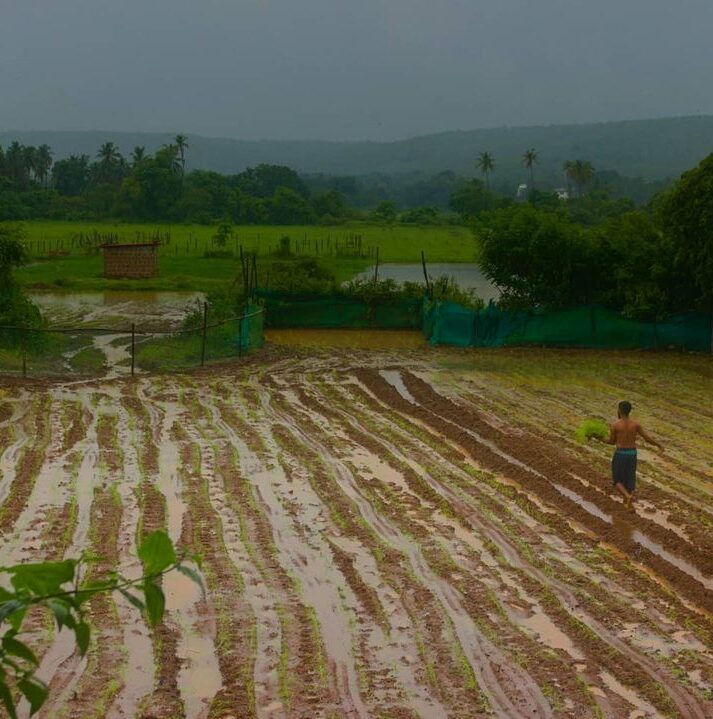As a kid in my Indian seaside village, surrounded by the Arabian Sea and hills, I was amazed by the life all around. Monsoons, the sea, and the rice fields were my everyday world, but then monsoons, once perfectly timed like a finely tuned melody, started arriving later. The soft, continuous drizzles transformed into erratic downpours, causing the rivers to surge. The sea seemed unsettled, with higher tides and fiercer waves. What used to be a distant concept of Climate Change from school textbooks became a tangible truth, unfolding right in front of me.
The impact on rice fields was harsh. Unpredictable monsoons flooded crops, while rising sea levels brought salt into the soil, damaging fertile land. From the old times the myth of “Rainmaker” lingered. A guardian of rainfall, its authority wavered as seasons shifted and monsoons turned irregular. On a stormy night, I met a village storyteller, an old lady who shared an ancient prophecy: the Rainmaker’s power would weaken if nature’s balance was disturbed. Humans needed to shield the forests, rivers, and seas, or else the rains would destroy everything.
After a few years, Trekking to the Himalayas, 2500 kilometers away from the sea, I settled into a homestay for one night. While talking with the homestay owner he said:

“The weather's become quite unpredictable, our lives deeply rely on the land, especially the timely monsoons that nurture our crops. But now, with erratic rain patterns, it's a challenge to make plans and ensure our sustainability.”
Amid sips of chai, local villagers shared stories that revealed their strong connection with nature. They spoke of the elusive snow leopards, Ghost and guardians of the Himalayas.
“We used to spot these magnificent creatures more often. Their presence signified the health of our mountains. But nowadays, we hardly see them, and it's a cause for concern. Climate changes are reshaping our surroundings.”
As night enfolded us, I contemplated the starlit sky, my thoughts drifting to the snow leopards – once potent symbols of mountain protection. In the face of the changing climate, their elusive presence felt like a fading memory.
Why do these mythical stories matter? These figures, the Rainmaker and Ice Guardian, reveal an essential truth: humans have learned and evolved through stories that highlight the bond between humanity and the environment. Just as our ancestors heeded these tales, today’s call to action revolves around sustainability education. Our challenges, from climate shifts to resource depletion, transcend geographical boundaries, impacting us all. Embracing education in sustainability equips us with tools to learn these complexities and think for innovative solutions. Our actions today will become the stories that guide those who come after us.

